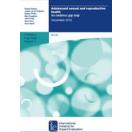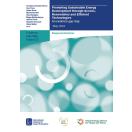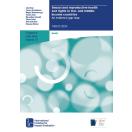
Adolescent sexual and reproductive health: an evidence gap map
3ie Evidence gap map report 5, 2017
Adolescence (ages 10–19) is a critical time period in life during which people undergo extensive biological, psychological and social changes. Sexual and reproductive health (SRH) plays an integral role during adolescence and can affect many aspects of a person’s life during and after this time. Programming that addresses this health area has the potential to greatly improve not only adolescents’ SRH, but also their overall health and their ability to reach their full potential.
To best invest finite resources in programming aimed at improving adolescent sexual and reproductive health (ASRH), decision-makers need to know what works and what does not, particularly within a low- and middle-income country (L&MIC) context. Impact evaluations – studies using experimental or quasi-experimental methods to measure effectiveness – help answer these questions, as do high-quality systematic reviews.
We sought to identify the key gaps in the evidence of the impact of ASRH programming in developing country settings by creating an evidence gap map of impact evaluations and systematic reviews.
Main findings in the gap map
Overall, we find that while there is a considerable amount of impact evaluation evidence, it only addresses some questions within this broad topic. Often with a narrow scope of outcomes, many studies do not address the diversity of adolescents or the effect of social norms. Furthermore, we note a wide range of quality in reporting, and that studies often include inadequate descriptions around the context of the evaluation, the interventions and associated theories of change. The question of cost-effectiveness is notable in its absence from the research questions.
High-quality synthesis that focuses on specific intervention types for adolescents in L&MICs is largely missing. There are opportunities for researchers to take the next step from reviewing the evidence on a broad topic, such as HIV prevention, to seeking answers around specific approaches, outcomes and adolescent sub-populations.
3ie has an interactive and dynamic online platform which allows users to explore the evidence included in a particular EGM, with links to user-friendly summaries of all studies.
3ie also produced a scoping paper that reviews the supply of and demand for evidence from impact evaluations and systematic reviews on ASRH interventions. It reveals several areas where a high demand for evidence combined with low or moderate supply of evidence suggest the need for further research.




